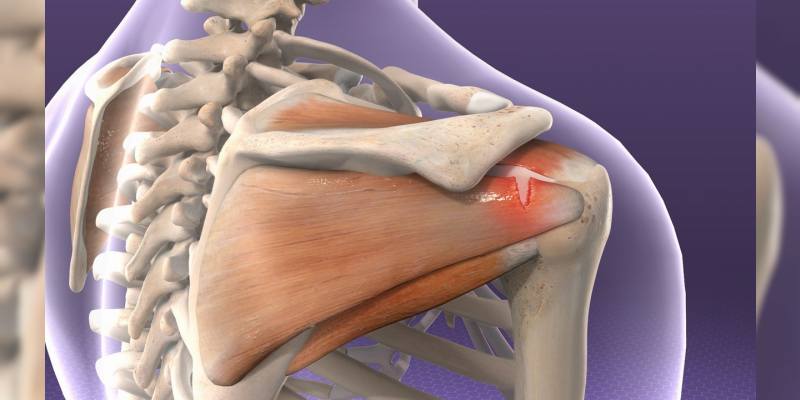Rotator cuff is an anatomical structure covering the head part in the upper tip of the humerus consisting of four muscles. Rotator cuff keeping the shoulder joint in place has important roles such as providing the shoulder move up and down, inward and outward. When it is ruptured due to falling, hitting and wearing, rotator cuff rupture occurs. The first symptom of this situation known as rotator cuff rupture is the pain spreading from the shoulder to the arm. The pain increases especially when the arm is lifted up.
Causes of Rotator Cuff Rupture
Rotator cuff rupture generally occurs as a result of traumas such as falling and hitting. Repetitive above head motions may cause a rupture. For example, people doing throw sports may experience this disease in the future as they force rotator cuff often. House painters also can be given as an example. Rotator cuff rupture may be seen after ceiling painting. Except for trauma, rupture may be caused by abrasion. Especially in people above age of 40, rotator cuff rupture may be caused by jamming of the tendon under acromion in front of scapula.
Symptoms of Rotator Cuff Syndrome
- Continuious shoulder pain,
- Shoulder pain getting severe during above head motions,
- Night pain (The pain may get so severe that the patient cannot sleep when tries to sleep on the affected area.)
- Muscle weakness felt especially when the arm lifts up,
- Restriction of shoulder movements,
- Clinking voice from the shoulder.
Diagnosis of Rotator Cuff Rupture
For the diagnosis of rotator cuff rupture, first of all, an examination is required. During the examination, the physician evaluates complaints and history of the patient. Rotator cuff rupture is examined with special tests. The diagnosis is made with this information. However, for final diagnosis and to determine type of the rupture, x-ray, MRI, and ultrasonography are performed. X-ray is useful for determining the ruptures caused by bone. MRI is performed to image rotator cuff directly. Rotator cuff syndrome may be as partial or full rupture. In partial ruptures that do not cover whole of the tendon, non-surgical treatment is beneficial. In full rupture and partial rupture which is not treated with non-surgical methods, surgical treatment may be required.
Treatment of Rotator Cuff Rupture
If the rupture is not full, treatment such as resting, medication, strengthening exercise and a cortisone injection may be applied. Medication is useful to control the pain and decrease the edema. Strengthening exercise is essential for non-surgical treatment of rotator cuff rupture and rehabilitation process after the surgery. In addition to strengthening exercise, stretching exercises are also applied.
Surgery of Rotator Cuff Rupture
If there is a full rupture in the shoulder or if non-surgical method is not benefited even though the rupture is partial, surgery of rotator cuff rupture should be applied. Surgery of rotator cuff rupture is carried out with arthroscopic surgery methods. Arthroscopy is a closed surgery method performed through 0.5 cm incisions. Large incisions are made as in the open surgery, imaging and repair are carried out through a few 0.5 cm incisions. As camera system of arthroscopic surgery has high quality and resolution, all details which cannot be seen in open surgery can be displayed on the monitor in high resolution. All instruments have special mini size suitable for arthroscopy. So, incision can be as small as possible, and the patient recovers in the most comfortable and fastest way.
For detailed information about arthroscopy, you can read arthroscopic surgery article.
You can read shoulder arthroscopy article to get information about the shoulder.
Recovery Process after the Surgery
The recovery process after shoulder arthroscopy is shorter and more comfortable than open surgery. Small incision affects recovery process and pain in positive way. The patient is generally discharged on the next day. The shoulder strap should be used for about 3 weeks. This strap should be angle-adjusted to relax the sutures. Ice is applied to reduce the swelling. The patient can get shower after 15th day when the sutures are removed. The rehabilitation process is very important for the recovery of shoulder ruptures. Passive exercise should be done for 6 weeks. Passive exercise is done with the help of an assistant (physiotherapist) not by the patient herself/himself by moving the arm. These exercises are necessary to provide range of motion. Successful surgery is depending on a successful rehabilitation process.








